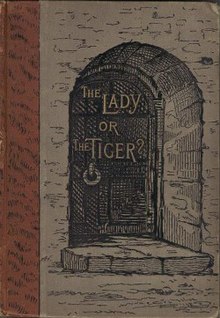Recreational mathematics is mathematics carried out for recreation (entertainment) rather than as a strictly research- and application-based professional activity or as a part of a student's formal education. Although it is not necessarily limited to being an endeavor for amateurs, many topics in this field require no knowledge of advanced mathematics. Recreational mathematics involves mathematical puzzles and games, often appealing to children and untrained adults and inspiring their further study of the subject.
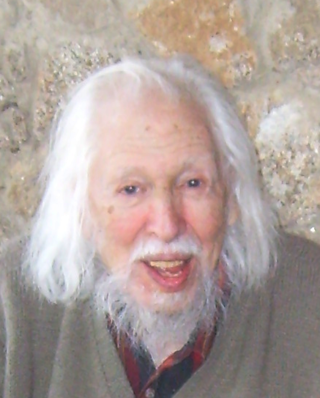
Raymond Merrill Smullyan was an American mathematician, magician, concert pianist, logician, Taoist, and philosopher.
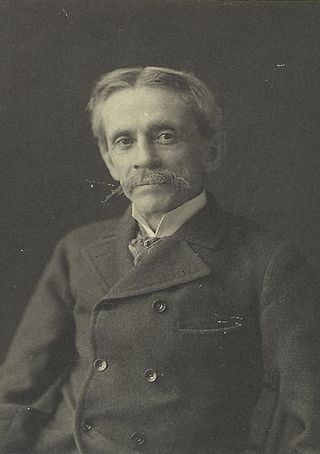
Frank Richard Stockton was an American writer and humorist, best known today for a series of innovative children's fairy tales that were widely popular during the last decades of the 19th century.
Knights and Knaves is a type of logic puzzle where some characters can only answer questions truthfully, and others only falsely. The name was coined by Raymond Smullyan in his 1978 work What Is the Name of This Book?

Batman is an American live-action television series based on the DC Comics character of the same name. It stars Adam West as Bruce Wayne/Batman and Burt Ward as Dick Grayson/Robin—two crime-fighting heroes who defend Gotham City from a variety of archvillains. It is known for its camp style and upbeat theme music, as well as its intentionally humorous, simplistic morality aimed at its preteen audience. It was described by executive producer William Dozier at the time as "the only situation comedy on the air without a laugh track". The 120 episodes aired on the ABC network for three seasons from January 12, 1966, to March 14, 1968, twice weekly during the first two seasons, and weekly for the third. In 2016, television critics Alan Sepinwall and Matt Zoller Seitz ranked Batman as the 82nd greatest American television series of all time. A companion feature film was released in 1966 between the first and second seasons of the TV show.
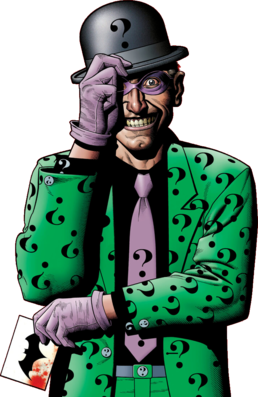
The Riddler is a supervillain appearing in American comic books published by DC Comics. The character was created by Bill Finger and Dick Sprang, and debuted in Detective Comics #140 in October 1948. He has become one of the most enduring enemies of the superhero Batman and belongs to the collective of adversaries that make up his rogues gallery.

Bronze Tiger is a character appearing in American comic books published by DC Comics. Created by Dennis O'Neil, Leopoldo Durañona, and Jim Berry, he first appeared in Richard Dragon, Kung Fu Fighter #1 during the Bronze Age of Comics.

Lady Shiva is a character appearing in American comic books published by DC Comics. The character was co-created by Dennis O'Neil and Ric Estrada, and first appeared in Richard Dragon, Kung Fu Fighter #5. Over time, she has become more closely associated with Batman and related characters, both as an enemy and an ally. She is a Chinese/Japanese martial arts grandmaster and one of the most skilled combatants in the DC Universe. She is an assassin-for-hire who specializes in killing her targets with her bare hands, and is the mother of Cassandra Cain, aka Batgirl.

Lady Blackhawk is an alias used by three fictional comic book characters appearing in American comic books. The first, Zinda Blake, was introduced in a DC Comics publication in 1959 ; the second, Natalie Reed, appeared in a DC Comics title in 1988. The third, as-yet-unnamed, Lady Blackhawk debuted in a DC Comics title in 2011. All three characters were aviators and soldiers.

The League of Assassins is a group of supervillains appearing in American comic books published by DC Comics. The group is depicted as a collective of assassins who work for Ra's al Ghul, an enemy of the superhero Batman. The group appeared in Strange Adventures #215, but did not become officially known as the League of Assassins until Detective Comics #405.

Kobra is the name used by two supervillains published by DC Comics. The Jeffrey Burr incarnation of Kobra and his brother Jason first appeared in Kobra #1, and were created by Jack Kirby. Jason Burr debuted as Kobra in Faces of Evil: Kobra #1 by Ivan Brandon and Julian Lopez. The Kobra identity is later established as an international terrorist organization that frequently clashes with superheroes associated with the Justice League.
The drinker paradox is a theorem of classical predicate logic that can be stated as "There is someone in the pub such that, if he or she is drinking, then everyone in the pub is drinking." It was popularised by the mathematical logician Raymond Smullyan, who called it the "drinking principle" in his 1978 book What Is the Name of this Book?
The Brown Bear of Norway is an Irish fairy tale collected by Patrick Kennedy which appeared in his Legendary Fictions of the Irish Celts (1866). It was later included by Andrew Lang in his anthology The Lilac Fairy Book (1910), though Lang misattributed his source as West Highland Tales.

The Apple Tree is a series of three musical playlets with music by Jerry Bock, lyrics by Sheldon Harnick, and a book by Bock and Harnick with contributions from Jerome Coopersmith. Each act has its own storyline, but all three are tied together by a common theme and common references, such as references to the color brown. The first act is based on Mark Twain's The Diaries of Adam and Eve; the second act is based on Frank R. Stockton's "The Lady, or the Tiger?"; the third act is based on Jules Feiffer's Passionella. The working title for the evening of three musicals was Come Back! Go Away! I Love You!

The Huntress is an antiheroine appearing in American comic books published by DC Comics. She is the third DC character to bear the name Huntress. Originally introduced as a new interpretation of Helena Wayne, no longer depicted as the future daughter of Batman and Catwoman as part of DC's post-Crisis on Infinite Earths relaunch, she was later established to be the modern-day equivalent, namesake and predecessor of Helena Wayne.
The Hardest Logic Puzzle Ever is a logic puzzle so called by American philosopher and logician George Boolos and published in The Harvard Review of Philosophy in 1996. Boolos' article includes multiple ways of solving the problem. A translation in Italian was published earlier in the newspaper La Repubblica, under the title L'indovinello più difficile del mondo.

Spud's Adventure is an adventure video game with role-playing video game elements published by Atlus in 1991. This game stars a cast of mostly vegetables; Spud, a cap-wearing potato, is the hero and must save Princess Mato from the evil clutches of Devi.

Ivan Triesault was an Estonian-American actor. His parents were from the island of Hiiumaa.
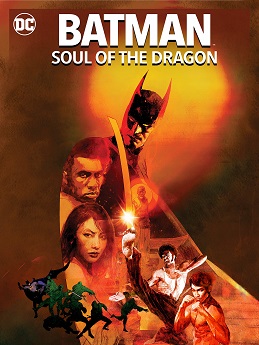
Batman: Soul of the Dragon is a 2021 American animated superhero film produced by Warner Bros. Animation and DC Entertainment. It is the 42nd film of the DC Universe Animated Original Movies. The film is directed by Sam Liu and executive produced by Bruce Timm featuring an original story not based on any comic, set in the 1970s and inspired by martial arts films of that time. It features the voices of David Giuntoli as Bruce Wayne / Batman, Mark Dacascos as Richard Dragon, Kelly Hu as Lady Shiva, Michael Jai White as Ben Turner / Bronze Tiger and James Hong as O-Sensei. White reprised his role from The CW's TV show Arrow and Hu reprised her role from WB Games Montréal' video game Batman: Arkham Origins. The film was dedicated to comic book writer Dennis O'Neil who died on June 11, 2020, at the age of 81.
